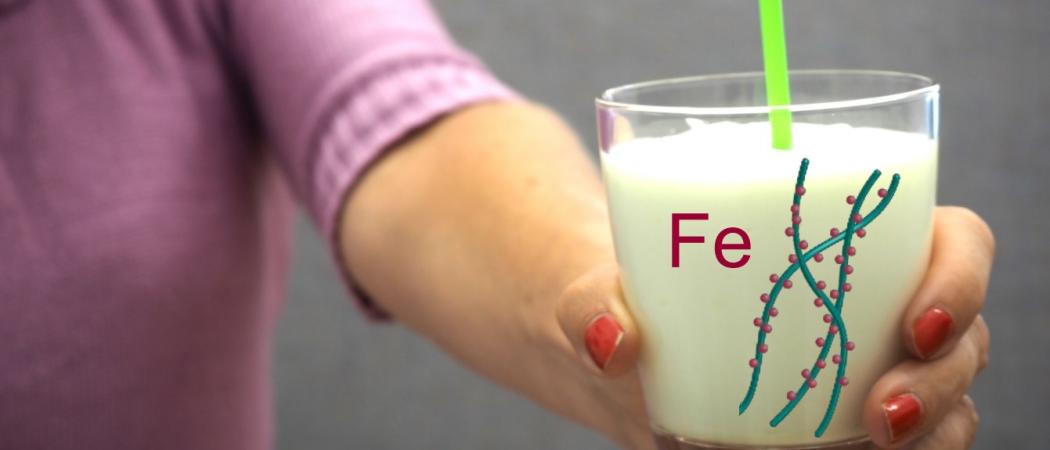
Effective and inexpensive Fe(II) fortification of drinks and food for the reduction of iron deficiency anaemia.
Iron deficiency anaemia (IDA) is a major global public health problem. A sustainable and cost-effective strategy to reduce IDA is iron fortification of foods. Ideally Fe(II) nanoparticles should be added to the food as it is the most bioavailable state.
In aqueous drinks and food, however, Fe(II) nanoparticles rapidly aggregate because of their limited colloidal stability. As dry powder it easily oxidizes due to its large surface area. A means to stabilize Fe(II) nanoparticles in food is needed.
Invention
The amyloid fibrils of β-lactoglobulin have been found to be excellent carriers for Fe(II) nanoparticles. The fibrils and the nanoparticles form a stable hybrid material. There is no aggregation in solution and the oxidation state of Fe(II) is maintained due to the reducing effect of the amino acid residue cystein.
The Fe-β-lactoglobulin fibrils can be added to a variety of drinks and food without changing the taste. In the stomach the Fe(II) is quickly dissolved by the gastric acid, while the fibrils undergo a slow enzymatic hydrolysis.
This difference in digestion kinetics allows the delivery of iron ions before the digestion of fibrils, hence avoiding the aggregation of iron particles.
No abnormal iron accumulation in any organ has been observed in mouse models.
The β-lactoglobulin fibrils are an inexpensive byproduct of cheese production. After the addition of Fe(II) the product can be processed to a freeze-dried powder for simplifying storage and transportation.
Features & Benefits
- Delivering Fe(II), which is the optimum bioavailable state for Fe uptake
- No organoleptic changes
- Extended shelf-life
- Available in both powder and liquid forms
- Low cost
Fields of Application: Iron fortification of foods
Patent Status: Patent pending
Publications: Nature Nanotechnology, Vol. 12, July 2017, DOI: 10.1038/ NNANO.2017.58
Contact: [email protected]; +41 44 632 2382





 A unique international forum for public research organisations and companies to connect their external engagement with strategic interests around their R&D system.
A unique international forum for public research organisations and companies to connect their external engagement with strategic interests around their R&D system.